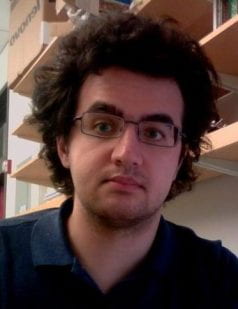Rendering Near-Field Speckle Statistics in Scattering Media
Simulation of Speckle Statistics
We introduce rendering algorithms for the simulation of speckle statistics observed in scattering media under coherent near-field imaging conditions. Our work is motivated by the recent proliferation of techniques that use speckle correlations for tissue imaging applications: The ability to simulate the image measurements used by these speckle imaging techniques in a physically-accurate and computationally-efficient way can facilitate the widespread adoption and improvement of these techniques. To this end, we draw inspiration from recently-introduced Monte Carlo algorithms for rendering speckle statistics under far-field conditions (collimated sensor and illumination).


In the figure, we used our algorithm to simulate light scattering in a medium with realistic tissue parameters, at thicknesses of 50 µm, 250 µm, 500 µm, and a mean free path of 50 µm, equivalent to optical depths (OD) of 1, 5 and 10, respectively. In each case the figure presents two speckle images obtained with a small shift of the input illumination, leading to correlated shifted speckle patterns (e.g., the shift is visible in the insets of the first two columns).
Near-field Imaging
More Info
Typically, most studies assume that both the light sources and the sensors are outside and at a large distance from the scattering volume, a set of conditions referred to as far-field imaging. By contrast, tissue imaging applications require both sources and sensors to be focused very close to the tissue (e.g., confocal microscopy), or even located inside it (e.g., fluorescent particles), a set of conditions known as near-field imaging. Far-field imaging simplifies analysis, simulation, and experiments relating to speckles. However, inferences drawn for the far-field case do not necessarily generalize to the near-field one. Our goal is to develop physically-accurate and efficient rendering algorithms that can help improve our understanding of speckle statistical properties under near-field conditions.
Highly efficient for near-field conditions
More Info
We develop a computationally efficient algorithm for simulating near-field (focused) speckle statistics inside scattering media. To this end, we extend the Monte Carlo rendering algorithm of Bar et al. [2019] in several ways that make it better-suited for near-field simulations. For the small volumes we simulate, our algorithm is already 3000× faster than an adaptation of the far-field algorithm
Physically Accurate
More Info
In our experiments, we validate the physical accuracy of our algorithms by showing that they can reproduce speckle correlation statistics simulated using wave-equation solvers, as well as speckle correlation measurements of real materials that are publicly available in the literature [Osnabrugge et al. 2017].
Near-field Conditions
We derive variants of these algorithms that are better suited to the near-field conditions (focused sensor and illumination) required by tissue imaging applications. Our approach is based on using Gaussian apodization to approximate the sensor and illumination aperture, as well as von Mises-Fisher functions to approximate the phase function of the scattering material. We show that these approximations allow us to derive closed-form expressions for the focusing operations involved in simulating near-field speckle patterns. As we demonstrate in our experiments, these approximations accelerate speckle rendering simulations by a few orders of magnitude compared to previous techniques, at the cost of negligible bias. We validate the accuracy of our algorithms by reproducing ground truth speckle statistics simulated using wave-optics solvers, and real-material measurements available in the literature. Finally, we use our algorithms to simulate biomedical imaging techniques for focusing through tissue.



People
Chen Bar

Ioannis Gkioulekas

Anat Levin
